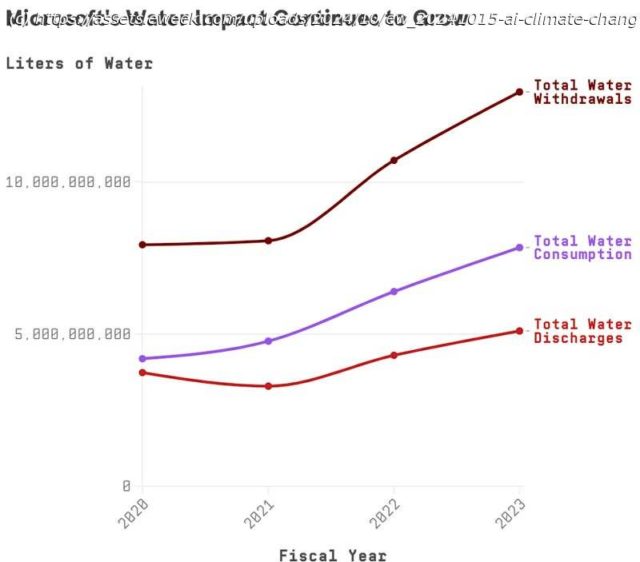How does AI for climate change work? Learn about AI’s role in enhancing climate resilience and reducing carbon emissions.
As artificial intelligence technology is deployed in an increasingly wide range of use cases, more people in the industry are beginning to investigate possible applications of AI for climate change. At the same time, more attention is being paid to finding ways to mitigate the environmental impact of AI and the data centers that power it. Due to its unusually high energy consumption for training and operation, AI also acts as a contributor to greenhouse gas emissions, waste, water shortages, and other environmental issues. Understanding the complicated relationship between AI technology and climate change can help you better understand how companies and governments might turn it into a boon for the environment.Energy Consumption of AI Systems
Google no longer claims to be carbon neutral, thanks to the company’s generative AI systems—which require massive amounts of energy to train, deploy, and operate, leading to a rise in carbon emissions. And the problem is only getting worse. According to Intelligent Computing, the computing power required for AI is doubling every 100 days. AI systems consume energy in a variety of ways—the following are two of the most common:
Training: Teaching AI requires using massive computational power, sometimes thousands of GPUs simultaneously over millions of hours. Systems like GPT-3 also have to go through multiple rounds of training.
Deployment and Operation: Once a tool like Chat-GPT is deployed, it’s always on, providing instant service to users worldwide. This service requires predictive technology, which requires a lot of energy to run, and the data centers supporting the AI operations are huge energy users.
Overall, the high energy consumption of AI technology poses the risk of overshadowing any benefits these advanced tools provide in the fight against climate change. To keep that from happening, companies have to adopt renewable energy sources and find innovative ways to reduce the carbon footprint of these tools.Data Centers and Their Environmental Footprints
AI systems use data center infrastructure to store and process vast amounts of data. These data centers need electricity for everything from facility lighting to liquid cooling to computing power, an energy requirement that is extremely high for ongoing, complex AI computations. In addition to electricity, data centers also use large quantities of water to keep machines from overheating, having a large impact on our water supplies.Data Center Energy Consumption
Advanced Hardware: High-performance GPUs and specialized AI chips, which consume more power, are required to process AI workloads efficiently.
Predictive Functionality: Running AI models for real-time predictions or recommendations demands constant computational resources, raising power usage.
Data Storage: AI systems require massive data storage, increasing the energy demand for maintaining and cooling storage servers.
As generative AI tools become increasingly entrenched in our technology, data center energy consumption will only continue to rise unless there are large improvements in energy efficiency. Examples include AI algorithms that require less computing power, along with the use of solar panels and other renewable resources to power these data centers.Data Center Water Usage
The data centers that support AI technologies use water to support various industrial-scale cooling systems that keep equipment and servers at an ideal temperature and prevent overheating and system failure. Water usage at data centers has been rising alongside the increase in AI system training and deployment.
One of the most water-intensive cooling methods at these centers is evaporative-based cooling, where water is evaporated to cool the air surrounding the equipment. It’s not uncommon for a cooling tower to use millions of gallons of water per year to cool a single data center. Such cooling approaches have significant costs to the water supply, which is already stressed. According to the World Wildlife Organization, 2.7 billion people experience water scarcity at least once per month every year. As climate change continues to heat the planet and cause desertification, this number could rise dramatically.
Fortunately, there are more sustainable cooling practices being used, which recycle water and as a result waste far less of it. For example, liquid immersion cooling submerges servers into a non-conductive liquid to cool them down.Data Center E-Waste Generation
Data centers can harm the environment not only by what they consume, but also by what they produce. E-waste, or electronic waste, refers to discarded servers, network equipment, and other hardware that are no longer functional. Some of this waste contains hazardous materials like lead that can pollute the environment and cause harm to plants, wildlife, and humans, especially those in underdeveloped nations, where a lot of the waste tends to land.






